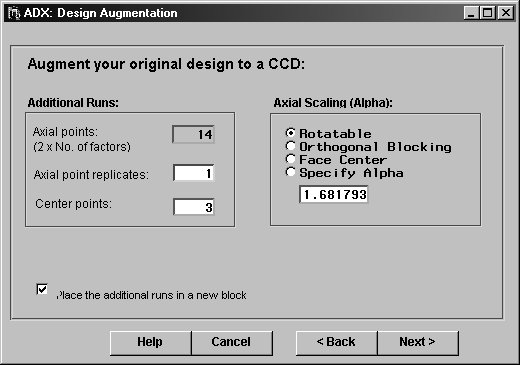| Special Topics |
Augmenting to a Response Surface Design
Montgomery (1997) provides the following guidelines for using screening designs and response surface designs:
- Use a two-level screening design to identify significant effects.
- Add runs along the gradient of the surface of the predicted response and fit a second-order curve.
- Find the optimum point (minimum or maximum) on the curve and use this information to determine new factor ranges for the response surface design. The new ranges should be small enough to investigate the surface in detail in the area.
- Conduct a response surface design experiment to find the optimum factor level.
Sometimes, due to the cost of runs or to irregularities in the response for the two-level design, it is preferable to augment the two-level design into a response surface design rather than running a completely new response surface experiment.
The augmented design is a central composite design. ADX enables you to specify the number of center points, the number of times you want to replicate all the axial points, and whether you want a rotatable, orthogonally blocked, face center, or custom design. As with the other augmentation methods, the new runs can be put into a new block.

|
Copyright © 2008 by SAS Institute Inc., Cary, NC, USA. All rights reserved.